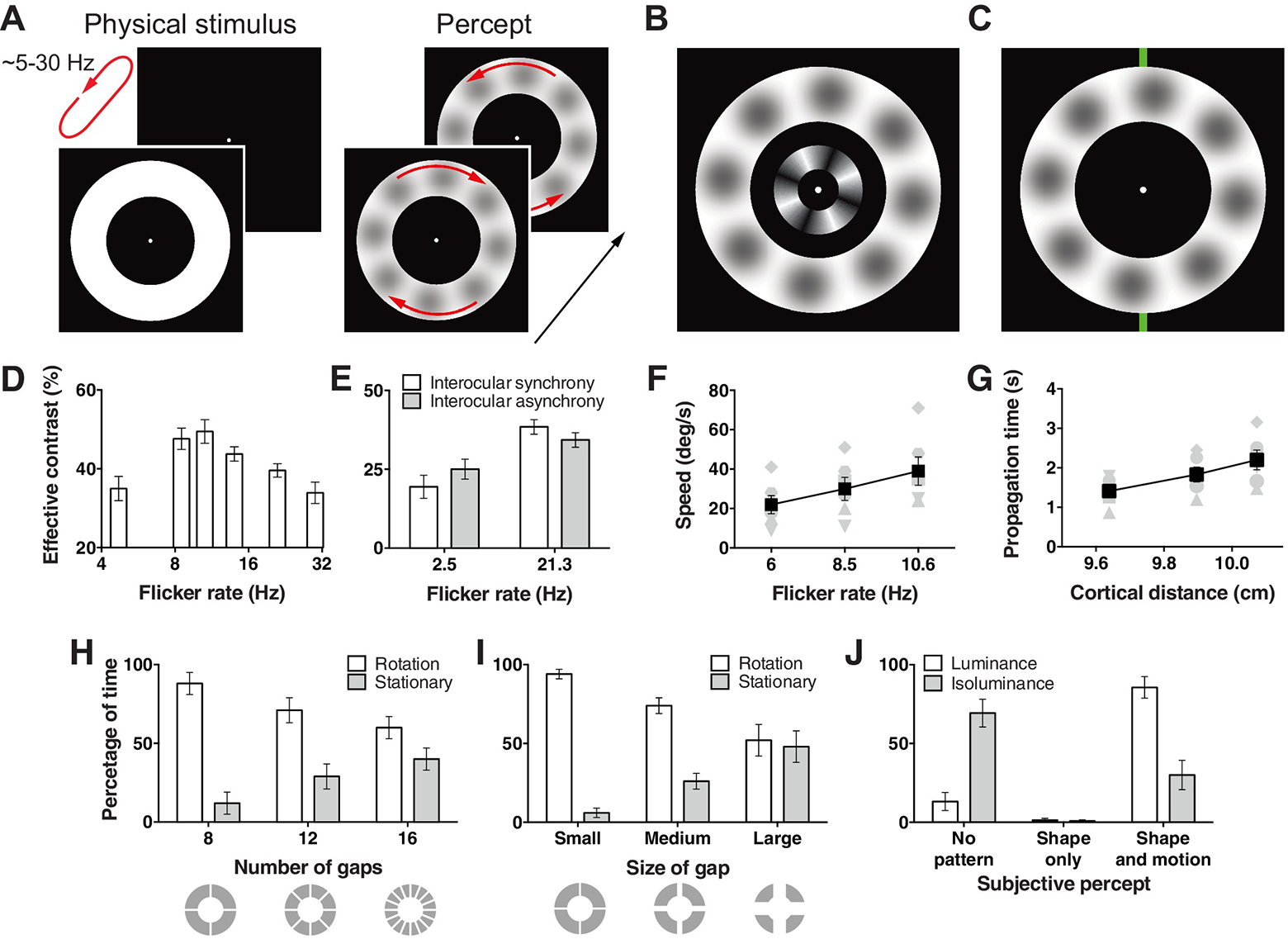The illusions of the brain. The world's first universal hallucination

Healthy volunteers see light gray circles that rotate inside the white ring. In one direction, then in another. The hallucination is surprisingly stable and standardized in most healthy people (note: a synthetic image with a visible effect on the KDPV, and the test animation itself is under the cut!)
As you know, visual hallucinations occur in the brain of both healthy and mentally ill people . For example, with severe fatigue, use of alcohol, certain psychotropic substances, sleep deprivation, blindness, migraines. Sometimes they arise just like that, for no particular reason.
It is believed that visual hallucinations occur in some special circumstances, when spontaneous neuronal activity begins in the brain, which "drowns" external stimuli, that is, signals from the organs of vision (more precisely, the result of processing these signals in the visual cortex). Such "special circumstances" usually occur as a result of functional, psychological or other disruption of the normal functioning of the brain.
We still know very little about this interesting phenomenon and the reasons for its occurrence. This can be understood: scientific experiments and experiments with hallucinations are limited for objective methodological reasons. Hallucinations are a very subjective experience of brain activity. They are difficult to stimulate, describe and set repeated experiments. For example, we have known for many years that the flashing light can cause hallucinations in almost every person. But even this basic experiment is difficult to carry out according to scientific methods. People are forced to describe their experience with words or drawings. That is, the understanding of the phenomenon was also limited to ways to express this experience. In the case of a blinking light, people described hallucinations of different colors and shapes. It is impossible to study a phenomenon with such chaotic manifestations.
')
Nevertheless, in recent years, science has achieved some success in this area. Finally, truly reliable methods of stimulating repeated visual hallucinations in mentally healthy people have been created.
A group of scientists from the School of Psychology at the University of New South Wales (Australia) and the Department of Mathematics at the University of Pittsburgh (USA) proposed their own version of the experiment with flashing light in an empty field.
They have developed such a method of experimenting with flashing light in a thin annular space, which reliably causes visual hallucinations in one spatial plane in most volunteers. Apparently, this is an experiment in the world for reliable stimulation of hallucinations. The scientific work was published on October 11, 2016 in eLife magazine (doi: 10.7554 / eLife.17072.001).
The essence of the experiment and the appearance of hallucinations are shown in the diagram. On a black background is a white ring that flickers with a frequency of 2-30 Hz. In this case, a person has hallucinations of light gray circles, which appear and move around the ring. First in one direction, and then in another. The appearance of the circles is shown on the right side of illustration A.

The uniqueness of this experiment lies in the constancy of illusion. Gray circles appear in the entire frequency range of the ring flicker on which the tests were conducted.
Scientists have carefully studied the characteristics of this visual hallucination, including the effective contrast of the circles (B) and the effective speed of rotation (C). To measure the effective contrast inside the main ring, an auxiliary ring was placed, with which hallucinating patients compared the contrast of gray circles arising in their brain.
It was found that the physical characteristics of the gray circles correlate with the ring flicker frequency. Graph (D) shows the dependence of the effective contrast on the ring flicker frequency.
Video flickering ring
Not recommended for people suffering from photosensitive epilepsy, migraine or mental disorders.
If for some reason you do not see or do not want to see gray circles, then a visual demonstration of the hallucination is shown in another demo video .
Scientists note that the actual experience of hallucinations in different people may differ, so that the demonstration video shows only one of the possible options.
The causes of the phenomenon so far are not completely clear. To test the version involving the activity of binocular neurons, specialists made two versions of the flickering ring, which were shown synchronously or asynchronously for each eye. The results were mixed, so that binocular neurons alone cannot explain this phenomenon.
Thus, now a new rich field of research is opening up before the scientific community. The emergence of illusions scientifically confirmed and reliably shown. Roughly speaking, hallucinating people now do not see completely different things - mills, lines, circles of different colors, etc. Now, the vast majority of healthy people have one stable and almost identical hallucination. This is a very important achievement.
Now, from stimulating hallucinations, scientists can move on to the next important step — to exploring the causes of visual illusions. And also to how you can use them for medical purposes. Maybe they will find applications for treating such diseases as Parkinson's disease (this is the task that scientists are going to work in the near future). It may be possible to find some interesting new ways to influence the brain with the help of induced hallucinations.
Control of hallucinations in healthy people will help fight these negative effects in those who suffer from diseases, deprivation of sleep and migraines. We need to know exactly how this “brain bug” seizes control of the visual cortex. How exactly is the processing of visual information in the brain. How to distinguish what is real and what is not.
Thanks to the creation of the world's first universal hallucination, we can now proceed to a detailed study of these critical issues.
Source: https://habr.com/ru/post/398385/
All Articles